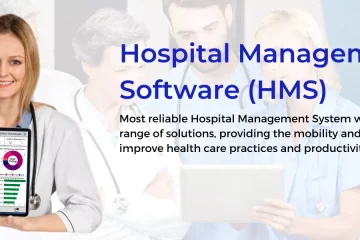In today’s fast-paced business environment, efficiency and cost-effectiveness are critical. Companies are constantly seeking ways to optimize their operations and minimize expenses. One area where significant savings can be realized is in the management of inspections. Whether it’s for quality control, safety compliance, or asset management, inspections are a vital part of many industries. However, traditional methods of managing inspections can be time-consuming, error-prone, and costly. Inspection management software offers a solution to these challenges by streamlining the inspection process and providing a range of benefits. Here are five ways inspection management software can save you time and money.
1. Streamlined Inspection Processes
- One of the primary benefits of inspection management software is the streamlining of inspection processes. Traditional inspection methods often involve manual data entry, paper-based forms, and multiple layers of approval. These steps can be cumbersome and prone to errors, leading to delays and increased costs.
- Automated Workflows: Inspection management software automates many of the steps involved in the inspection process. This includes scheduling inspections, assigning tasks, and notifying relevant personnel. Automated workflows ensure that inspections are conducted on time and that any issues are addressed promptly. This reduces the need for follow-up inspections and minimizes downtime.
- Digital Forms and Checklists: With inspection management software, inspectors can use digital forms and checklists to record their findings. This eliminates the need for paper forms and reduces the risk of data entry errors. Digital forms can be customized to suit the specific requirements of different inspections, ensuring that all necessary information is captured accurately and consistently.
- Real-Time Data Access: Inspection management software allows inspectors to access and update data in real-time. This means that any issues identified during an inspection can be addressed immediately, rather than waiting for paper forms to be processed and reviewed. Real-time data access also enables managers to monitor the progress of inspections and make informed decisions quickly.
2. Improved Accuracy and Compliance
Accurate and compliant inspections are crucial for ensuring the safety and quality of products and services. However, manual inspection processes are often prone to errors, which can result in non-compliance and costly rework.
- Standardized Inspection Procedures: Inspection management software ensures that all inspections are conducted according to standardized procedures. This reduces variability and ensures that all inspectors follow the same guidelines. Standardized procedures help maintain consistency and accuracy across all inspections, reducing the risk of errors and non-compliance.
- Automated Data Validation: Inspection management software can automatically validate data entered by inspectors. This includes checking for missing or incorrect information and flagging any discrepancies. Automated data validation helps ensure that all inspection data is accurate and complete, reducing the risk of errors and non-compliance.
- Audit Trails and Reporting: Inspection management software provides a complete audit trail of all inspection activities. This includes records of who conducted the inspection, when it was conducted, and what findings were recorded. Audit trails are essential for demonstrating compliance with regulatory requirements and for identifying any areas that need improvement. The software can also generate detailed reports, which can be used to track performance and identify trends.
3. Enhanced Communication and Collaboration
Effective communication and collaboration are essential for successful inspections. However, traditional inspection methods often involve multiple parties and can be challenging to coordinate.
- Centralized Communication: Inspection management software provides a centralized platform for all communication related to inspections. This includes notifications, updates, and feedback. Centralized communication ensures that all relevant parties are kept informed and that any issues are addressed promptly. This reduces the risk of miscommunication and delays.
- Collaboration Tools: Many inspection management software solutions include collaboration tools that allow inspectors and other stakeholders to work together more effectively. This includes features such as document sharing, task assignments, and real-time messaging. Collaboration tools help ensure that all parties are on the same page and that inspections are conducted efficiently.
- Mobile Access: Inspection management software often includes mobile access, allowing inspectors to conduct inspections and update data from anywhere. Mobile access ensures that inspectors can stay connected and communicate with other team members, even when they are in the field. This increases flexibility and reduces the need for inspectors to return to the office to update records.
4. Reduced Costs and Increased Efficiency
By streamlining processes, improving accuracy, and enhancing communication, inspection management software can significantly reduce costs and increase efficiency.
- Reduced Administrative Costs: Traditional inspection methods often involve significant administrative costs, including printing and storing paper forms, manually entering data, and coordinating inspections. Inspection management software reduces these costs by eliminating the need for paper forms and automating many of the administrative tasks. This allows staff to focus on more value-added activities.
- Faster Issue Resolution: Inspection management software enables faster identification and resolution of issues. Real-time data access and automated notifications ensure that any problems are addressed promptly, reducing the risk of costly delays and rework. This helps maintain productivity and ensures that projects stay on schedule.
- Improved Resource Allocation: Inspection management software provides insights into the performance and efficiency of inspections. This allows managers to allocate resources more effectively and identify any areas that need improvement. Improved resource allocation helps ensure that inspections are conducted efficiently and that any issues are addressed promptly.
5. Enhanced Data Management and Analytics
Effective data management and analytics are crucial for making informed decisions and driving continuous improvement. Inspection management software provides powerful data management and analytics capabilities that can help organizations optimize their inspection processes.
- Centralized Data Repository: Inspection management software provides a centralized repository for all inspection data. This ensures that all information is stored securely and can be accessed easily. A centralized data repository also makes it easier to analyze data and identify trends.
- Advanced Analytics: Many inspection management software solutions include advanced analytics tools that allow organizations to analyze inspection data and identify areas for improvement. This includes features such as data visualization, trend analysis, and predictive analytics. Advanced analytics help organizations make informed decisions and drive continuous improvement.
- Data Integration: Inspection management software can integrate with other systems, such as enterprise resource planning (ERP) and asset management systems. This allows organizations to leverage inspection data across different areas of their operations. Data integration helps ensure that all relevant information is considered when making decisions and that any issues are addressed promptly.
Conclusion
Inspection management software offers a range of benefits that can help organizations save time and money. By streamlining processes, improving accuracy, enhancing communication, reducing costs, and providing powerful data management and analytics capabilities, inspection management software can help organizations optimize their inspection processes and achieve their business goals. As businesses continue to seek ways to improve efficiency and reduce costs, inspection management software is becoming an increasingly valuable tool. Whether you are looking to improve quality control, ensure safety compliance, or manage assets more effectively, inspection management software can provide the solution you need.




